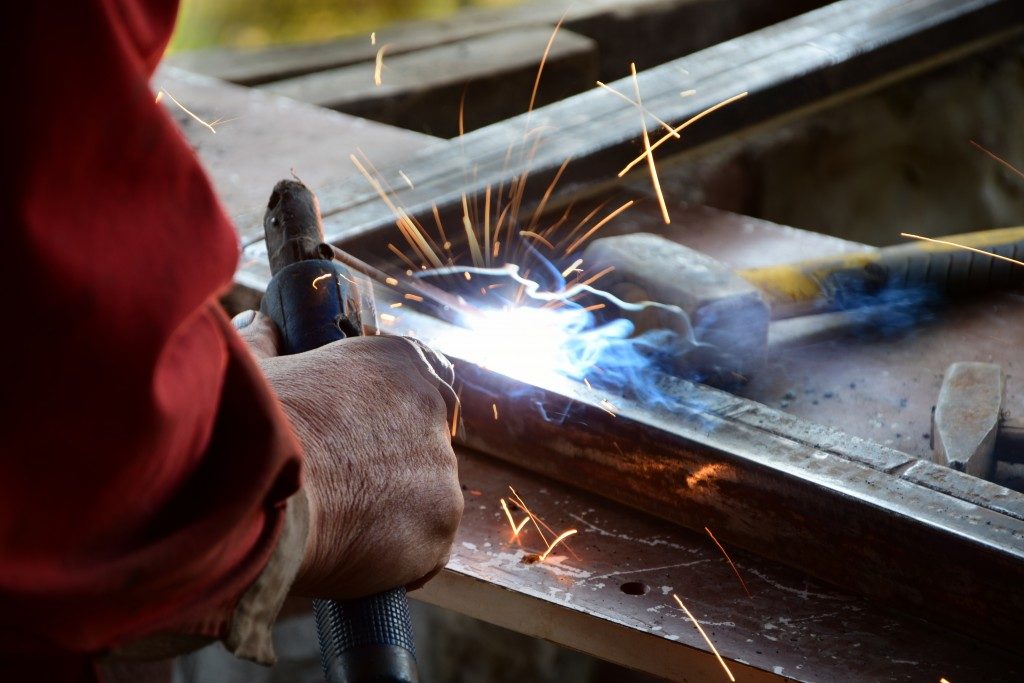Welding is one of the most dangerous jobs in the world, and it’s not just because of those red hot sparks. Several factors increase your risk of injury or worse, but specific safety measures and protective welding products can minimize or eliminate those risks.
1. Falls and Accidents
Where you are is almost as important as what you’re doing. A welding job can require you to climb tall structures or work in an awkward position. You’ll need welding safety products as well as a more meticulous mindset. Clutter and debris that only cause minor falls in your usual workplace can become quite dangerous if you’re working in an elevated area.
2. UV Radiation
Your eyes are one of the most vulnerable parts of your body and just looking at the bright lights of arc-welds can be enough to damage your eye. The intense UV radiation from welding can result in arc-eye, and chronic unprotected exposure to welding lights can lead to cataracts and eventually, vision loss.
3. Chronic Exposure to Loud Noises
Accompanying the bright lights are loud noises. Welding can be tough on the ears, especially when using oxygen torches. These welding tools produce noise levels that can be compared to an airplane taking off. Constant exposure can temporarily damage your hearing, cause vertigo, lead to tinnitus, and cause permanent hearing loss. Wearing earplugs can mitigate the effects of loud noises, but they also come with their risks, especially at a busy workplace.
4. Harmful Fumes and Gases

The fumes from your welding job as well as the gases you use can cause a lot of problems if you’re not careful. Pneumonia, asthma, lung irritation, throat problems, metal fume fever, even cancer — unsafe welding practices with regards to fumes and gases can increase your risk of developing these conditions.
5. Fire Hazards
Fire is always a danger when you’re dealing with 10,000°F welding arcs. Wayward sparks can easily set fire to flammable materials, so make sure your work area is void of rubble and debris. Use flame retardant material to cover nearby flammable materials and always have a fire extinguisher nearby.
6. Electrocution
Electric shocks from welding can be mild to life-threatening depending on the circumstances. Proper insulation will usually eliminate these risks. Make sure to keep your welding equipment well maintained as cords and wires might get accidentally damaged by welding sparks.
7. Cuts and Scratches
When working with metal, cuts and scratches are all but unavoidable. Sharp metal edges can easily cut your skin, and you might need to disinfect your wound or even get a tetanus shot. Small pieces of metal can sometimes fly off and cause damage; it can be especially dangerous if it penetrates the eye. Wear protective clothing and try not to have any piece of skin exposed when doing your job.
In the end, burns might be the most common welding injuries, but there is a multitude of less obvious welding hazards. Wear protective equipment and be meticulous in prioritizing safety.



